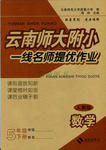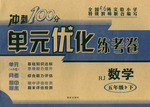题目内容
(江苏省金坛一中2009届高三5月模拟E篇)
Botany, the study of plants, plays a strange role in the history of human knowledge. For many thousands of years it was one field about which humans had little knowledge. It is impossible to know today just what our Stone Age Ancestors knew about plants, but from what we can observe of preindustrial societies that still exists, a detailed learning of plants and their properties(特征)must be very ancient. This is reasonable. Plants are the basis of the food pyramid for all living things, even for other plants. They have always been greatly important to the good of peoples, not only for food, but also for clothing, weapons, tools, medicines, housing, and a great many other purposes. Tribes(部落)living today in the woods of the Amazon recognize hundreds of plants and know many properties of each. To them botany, as such, has no name and is probably not even recognized as a special branch of knowledge at all.
Unfortunately, the more industrialized we become the farther away we move from direct relation with plants, and the less clear our knowledge of botany grows. Yet everyone comes unconsciously on a surprising amount of botanical knowledge, and few people will fail to recognize a rose or an apple. When our New Stone Age ancestors, living in the Middle East about 10 000 years ago, discovered that certain grasses could be harvested and their seeds planted for richer production the next season, the first great step in a new connection of plants and humans was taken. Grains were discovered and from them flowed the marvel of agriculture: planted crops. From then on, humans would increasingly take their living from the controlled production of a few plants, rather than getting a little here and a little there from many varieties that grew wild and the collected knowledge of tens of thousands of years of experience and close relations with plants in the wild would begin to disappear.
67. Which of the following assumptions(假设)about early humans is expressed in the passage?
A. They probably had wide knowledge of plants.
B. They clearly divided knowledge into separate fields
C. They did not enjoy the study of botany.
D. They placed great importance on ownership of property.
68.According to the passage, why has general knowledge of botany decreased?
A. People no longer value plants as a useful resource.
B. Botany is not recognized as a special branch of science.
C. Research is unable to keep up with the increasing number of plants.
D. Direct relation with a variety of plants has decreased.
69. In paragraph 2, the underlined word “marvel” is closest in meaning to _____.
A. edge B. sign C. beginning D. wonder
70. According to the passage, what was the first great step toward the practice of agriculture?
A. The invention of agriculture tools and machines.
B. The development of a system of names for plants.
C. The discovery of grasses that could be harvested and replanted.
答案 67.A 68.D 69.D 70.C

 云南师大附小一线名师提优作业系列答案
云南师大附小一线名师提优作业系列答案 冲刺100分单元优化练考卷系列答案
冲刺100分单元优化练考卷系列答案(江苏省金坛一中2009届高三5月模拟D篇)
Read the postcards and choose the best answer for each question.
| Bikaner 13/1/2007 Dear Youming, Have arrived in Bikaner leaving Delhi behind us. Unfortunately there just wasn’t enough time to see everything in only four days. Outside Bikaner’s city walls are miles of desert wilderness. Tomorrow I look forward to exploring the wall itself. The sandstone architecture is said to be incredible. We are also going to take a camel ride through some of the desert. Can you picture me on a camel? I’ll make sure that I have lots of photographs taken. After three days here the next stop is Jaipur. Love, Lisa | Delhi 8/1/2007 Dear Mum and Dad, We have just arrived in India and are in the bustling and exciting city of Delhi. This morning we visited the Red Fort. There we found magnificent palaces, mosques and splendid buildings. I could have spent hours there. This afternoon, amongst other things, we visited the India Gate---a memorial for Indian soldiers lost at war earlier this century. The gates were the largest I have ever seen. Wish you were here, Lisa |
| 21/1/2007 Dear Jinao, So far so good. Once we arrived in Agra, we went straight to the Taj Mahal. I have never seen anything so wonderful. They said that it would look something like Humuyan’s Tomb(Delhi)and it does! There really is nothing more amazing than the brilliant white of the Taj shimmering in the daylight. Apparently the pollution poses a real threat to it. We really covered a great deal in three days here. It’s been an amazing experience and I’m sorry that we’ll be flying home this evening. Bye for now. Lisa | Jaipur 17/1/2007 Dear Libing, I am writing from the Johari bazaar in Jaipur. This is a wonderful jewellery market. I’ve found all sorts of intriguing treasures. This morning we visited the Hawa Mahal,”The palace of the Winds”. It is the most incredible structure. The façade of the palace is all windows and filigree screens. Yesterday we visited the City Palace and the Jantar Mantar. After two days here, the next stop is Agra where I look forward to visiting the fort and the Taj. See you soon, Lisa |
63. The order in which Lisa visited the cities is ______.
A. Delhi, Bikaner, Agra, Jaipur
B. Delhi, Bikaner, Jaipur, Agra
C. Jaipur, Bikaner, Agra, Delhi
D. Bikaner, Delhi, Jaipur, Agra
64. According to the postcards, which of the following statements is TRUE? Lisa _______.
A. was hesitant about going on a camel ride
B. visited the Hawa Mahal and the City Palace on the same day.
C. did not have the opportunity to visit the India Gate
D. did not get to see as much of Delhi as she would have liked
65. The aspect of the Taj Mahal that impressed Lisa the most was its ________.
A. colour B. shape C. location D. size
66. The postcards from Lisa about her trip to India indicate that ______.
A. she plans to return to India some day soon
B. the hotels she stayed in had excellent service
C. the people she met in India were friendly
D. she thoroughly enjoyed her trip